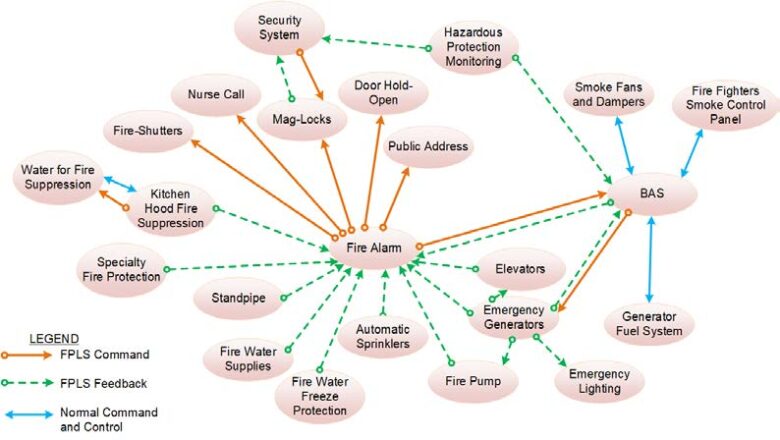
The building code now mandates that any interconnections or data transfers between two or more building systems with life safety or fire protection functions must be tested in compliance with CAN/ULC-S1001 standards.
What is CAN/ULC-S1001
CAN/ULC-S1001 is a document that provides a methodology for conducting a documented testing program of interconnections between two or more fire protection and life safety systems. For clarity, this standard does not include testing of those individual systems themselves.
This ULC standard defines, among other things:
• the documentation of the test methodology (the test plan) and the results of the implementation of the test plan (the test record)
• the qualifications of the individual/company conducting the testing of these
• interconnections (the integrated testing coordinator or “ITC”)
• the responsibilities of the contractor, installation contractor and design professionals in this testing process

Who is the ITC
One thing the standard does not state is ‘who hires the ITC?’ Under this
standard, nearly anyone can be the ITC, including the owner, provided
they meet the requirements for specialized knowledge and experience.
Although not yet required by the various provincial building codes[1],
ULC offers a voluntary certification program for individuals and companies
for provision of ITC services which conform to the requirements of
CAN/ULC-S1001, an option that might be considered for any project.

Going Forward
On your next project, whether it is a new building, or modifications to an
existing building, the following two questions must be asked:
1. Are there new or modified interconnections between two or more fire protection and/or life safety systems? If yes (even if there is
only one interconnection), then integrated testing in accordance
with CAN/ULC-S1001 is required.
2. Who will retain the ITC? The ITC could be the Owner’s staff, or a
3rd party testing agency hired by the owner or by the general contractor/construction manager
3. Multi-Party Process - Under the standard, there are multiple parties involved in this testing process, including the “integrated testing coordinator”, designers (engineers and architects), the installation contractors, general contractors/construction managers, and owners - each with designated responsibilities for compliance with this standard. While this testing involves a number of mechanical and electrical systems, it also affects vertical transportation, security doors, automatic fire shutters, fire door release devices, construction safety, and methods of contracting, etc. The Ontario Association of Architects, OAA News 2023/Jan/23 recognizes this is a multi-disciplinary effort to achieve the goals of this test standard.
Do not delay getting the ITC onto your project – completion of the
integrated testing will be a pre-condition for obtaining occupancy of the
building, and will be required by the design professionals and building
departments.
Examples of interconnections between various building systems

